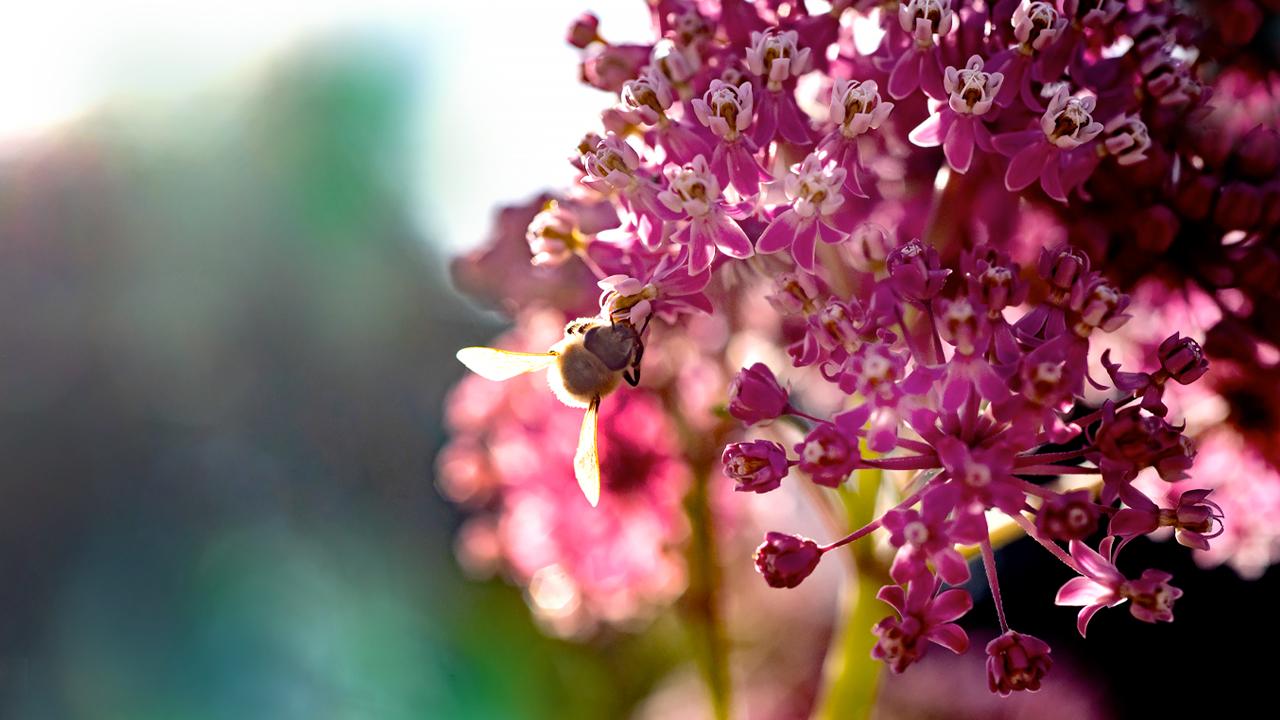
Stuart Wagenius, Ph.D.
Adjunct Assistant Professor, Northwestern University
- Conservation biology
- Pollination ecology
- Feedbacks between evolutionary and ecological dynamics
- Spatial scale-dependence in species interactions
- Biology of Echinacea angustifolia in fragmented habitat
- Fire ecology
- Restoration ecology
- Prairie
Research in my lab addresses questions about the ecology and evolution of native perennial plants in remnant prairie habitat. Native prairie plants used to live in vast continuous habitat, but now they are constrained to small and isolated remnants. The persistence of plant populations in these remnants depends on their demographic response to new threats such as lack of fire, competition with weeds, inbreeding depression, and limited mate availability. My students and I quantify the ecological and evolutionary consequences of habitat fragmentation on herbaceous plant populations. We investigate short-term consequences, such as reproductive failure and inbreeding depression, as well as long-term consequences, such as loss of genetic diversity and lack of fire.
I offer research opportunities for enthusiastic students, teachers, and volunteers, including graduate students through at Northwestern University. I teach courses in statistics and plant conservation genetics through Northwestern's program in plant biology and conservation and the Center for Plant Conservation. In 1995 I started the Echinacea Project, which investigates the ecology and evolution of the purple coneflower Echinacea angustifolia in fragmented prairie habitat in western Minnesota.
Stuart Wagenius, Jared Beck, and Gretel Kiefer. Fire synchronizes flowering and boosts reproduction in a widespread but declining prairie species. PNAS. In Press.
Page, M. L., Ison, J. L., Bewley, A. L., Holsinger, K. M., Kaul, A. D., Koch, K. E., Kolis, K. M., and Wagenius, S. 2019. Pollinator effectiveness in a composite: A specialist bee pollinates more florets but does not move pollen farther than other visitors. American Journal of Botany 106: 1487–1498. PDF
Waananen, A., G. Kiefer, J. L. Ison, and S. Wagenius. 2018. Mating opportunity increases with synchrony of flowering among years more than synchrony within years in a nonmasting perennial. The American Naturalist 192: 379-388. PDF
Ison, J. L., L. J. Prescott, S. W. Nordstrom, A. Waananen, and S. Wagenius. 2018. Pollinator-mediated mechanisms for increased reproductive success in early flowering plants. Oikos 127: 1657-1669. PDF
Gallagher, M. K. and S. Wagenius. 2016. Seed source impacts germination and early establishment of dominant grasses in prairie restorations. Journal of Applied Ecology 53: 251-263. PDF
Muller, K. and S. Wagenius. 2016. Echinacea angustifolia and its specialist ant-tended aphid: a multi-year study of manipulated and naturally-occurring aphid infestation. Ecological Entomology 41: 51-60. PDF
Shaw, R. G., S. Wagenius and C. J. Geyer. 2015. The susceptibility of Echinacea angustifolia to a specialist aphid: eco-evolutionary perspective on genotypic variation and demographic consequences. Journal of Ecology 103: 809-818. PDF
Kittelson, P., S. Wagenius, R. Nielsen, S. Qazi, M. Howe, G. Kiefer, and R. G. Shaw. 2015. Leaf functional traits, herbivory, and genetic diversity in Echinacea: Implications for fragmented populations. Ecology 96: 1877–1886. PDF
Ison, J.L., and S. Wagenius. 2014. Both flowering time and spatial isolation affect reproduction in Echinacea angustifolia. Journal of Ecology 102: 920–929. PDF
Ison, J.L., S. Wagenius, D. Reitz., M.V. Ashley. 2014. Mating between Echinacea angustifolia (Asteraceae) individuals increases with their flowering synchrony and spatial proximity. American Journal of Botany 101: 180-189. PDF
Ison, J.L., S. Wagenius, D. Reitz., M.V. Ashley. 2013. Development and evaluation of microsatellite markers for a native prairie perennial, Echinacea angustifolia (Asteraceae). Applications in Plant Sciences 1: 1300049. PDF
Wagenius, S., A. B. Dykstra, C. E. Ridley, and R. G. Shaw. 2012. Seedling recruitment in the long-lived perennial, Echinacea angustifolia: a 10-year experiment. Restoration Ecology 20: 352-359. PDF
Ridley CE, Hangelbroek HH, Wagenius S, Stanton-Geddes J, Shaw RG, 2011. The effect of plant inbreeding and stoichiometry on interactions with herbivores in nature: Echinacea angustifolia and its specialist aphid. PLoS ONE 6(9): e24762. PDF
Wagenius, S., and S. P. Lyon. 2010. Reproduction of Echinacea angustifolia in fragmented prairie is pollen-limited but not pollinator-limited. Ecology 91:733-742. PDF
Wagenius, S., H. H. Hangelbroek, C. E. Ridley, and R. G. Shaw. 2010. Biparental inbreeding and interremnant mating in a perennial prairie plant: fitness consequences for progeny in their first eight years. Evolution 64:761-771. PDF
Ruth G. Shaw, Charles J. Geyer, Stuart Wagenius, Helen H. Hangelbroek, and Julie R. Etterson. 2008. Unifying life-history analyses for inference of fitness and population growth. American Naturalist 172: E35 – E47. PDF
Geyer, C.J., S. Wagenius, and R.G. Shaw. 2007. Aster models for life history analysis. Biometrika 94: 415-426. PDF
Wagenius, S., E. Lonsdorf, and C. Neuhauser. 2007. Patch aging and the S-Allee effect: breeding system effects on the demographic response of plants to habitat fragmentation. American Naturalist 169:383-397. PDF
Wagenius, S. 2006. Scale dependence of reproductive failure in fragmented Echinacea populations. Ecology 87:931-941. PDF
Wagenius, S. 2004. Style persistence, pollen limitation, and seed set in the common prairie plant Echinacea angustifolia (Asteraceae). International Journal of Plant Sciences 165:595-603. PDF
Neuhauser, C., D. A. Andow, G. E. Heimpel, G. May, R. G. Shaw, and S. Wagenius. 2003. Community genetics: expanding the synthesis of ecology and genetics. Ecology 84:545-558. PDF
Echinacea Project
The Echinacea Project is a long-term investigation of the ecology and evolution of plants in fragmented prairie habitat. The Echinacea Project started as Stuart's dissertation research project in 1995. Read about this cutting-edge research that helps us understand long-lived prairie plants and the other species with which they interact.
Echinacea Field Log
This website, affectionately known as "the flog," is a field journal for members of the Echinacea Project. We're field biologists with limited memory. We post details of events and activities that we can't fit easily on a datasheet, but that we might want to remember.
Television Episode Featuring the Echinacea Project
A public TV show featured a long interview with Stuart about the Echinacea Project. Watch it. It's a 30 minute episode of "Prairie Yard & Garden" called "Prairie Flora: History and Future." It aired Feb 20, 2014 in western MN and the Dakotas. Please help spread the word about prairies!

